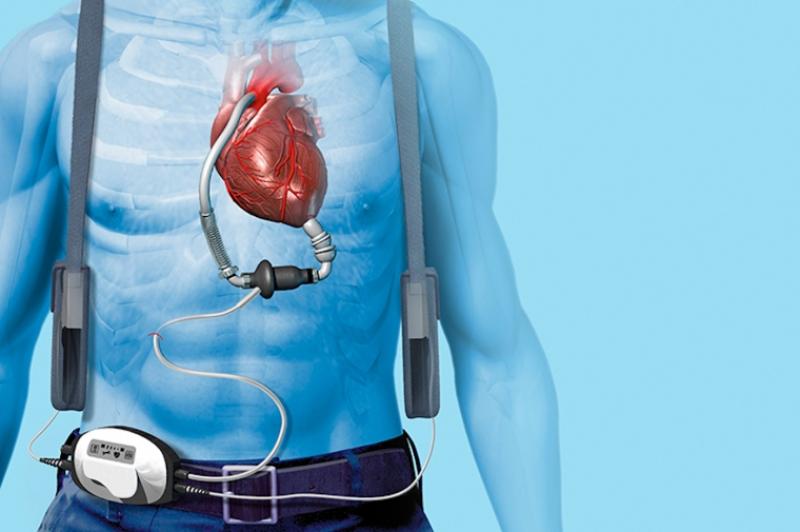Advanced Solutions for Heart Failure: Understanding Ventricular Assist Devices Benefits and Trends
Ventricular Assist Devices (VADs) have emerged as a groundbreaking advancement in the management of severe heart failure. These mechanical pumps are designed to support cardiac function and blood flow in individuals with weakened hearts, particularly those awaiting heart transplantation or who are ineligible for it. With rising incidences of cardiovascular diseases and advancements in medical technology, the demand for VADs has significantly increased, reshaping therapeutic approaches to heart failure.
How Ventricular Assist Devices Improve Patient Outcomes in Severe Heart Failure
Ventricular Assist Devices are crucial in enhancing the quality of life and survival rates among patients with end-stage heart failure. These devices are implanted surgically to assist one or both ventricles in pumping blood efficiently to the rest of the body. Typically, VADs are categorized into Left Ventricular Assist Devices (LVAD), Right Ventricular Assist Devices (RVAD), or Biventricular Assist Devices (BiVAD), depending on the need for single or dual chamber support.
The functional mechanism of VADs involves taking over a portion of the pumping work of the heart, thereby reducing the strain on the compromised cardiac tissue. For patients awaiting heart transplants, VADs serve as a critical bridge-to-transplant solution, ensuring adequate circulation and organ perfusion. Moreover, for some patients, they offer a destination therapy option, providing long-term support when transplantation is not feasible.
Recent technological advancements have led to improvements in device miniaturization, durability, and biocompatibility. Modern VADs have integrated features such as continuous flow pumps, which reduce the risk of blood clots and device failure. Additionally, enhanced battery life and external controller systems contribute to greater patient mobility and ease of use, facilitating better adherence to treatment and improved overall prognosis.
Exploring the Commercial Landscape and Market Dynamics of Ventricular Assist Devices
The global commercial landscape for Ventricular Assist Devices is characterized by rapid innovation and competitive development by leading medical technology manufacturers. Key factors driving market growth include the rising burden of heart failure globally, increasing awareness regarding advanced treatment options, and expanding reimbursement policies in developed healthcare systems.
Market participants focus heavily on research and development to enhance device performance and patient compatibility. Partnerships and collaborations between medical device companies and healthcare institutions are common strategies employed to accelerate product innovation and clinical adoption. Additionally, regulatory approvals and clinical trial outcomes significantly impact the market positioning and acceptance of new VAD models.
Emerging economies also present significant opportunities for market expansion fueled by growing healthcare infrastructure and rising patient awareness. However, challenges remain, such as the high cost associated with VAD implantation and maintenance, as well as the complexity of surgical procedure and postoperative care.
Navigating In-Depth Industry Reports for Ventricular Assist Devices Market Forecast
For professionals and stakeholders seeking a comprehensive understanding of the market trajectory, detailed industry reports on Ventricular Assist Devices provide valuable insights. These reports offer data-driven analysis of market segmentation, competitive landscapes, technological advancements, and regulatory scenarios influencing industry growth.
Access to latest market forecasts and trend analyses is particularly critical for investors, healthcare providers, and device manufacturers aiming to strategize effectively in the evolving cardiovascular devices sector. Such reports also include case studies, end-user adoption rates, and country-wise demand analyses, facilitating a clear view of global and regional market dynamics.
Stakeholders are guided by these resources to identify emerging opportunities such as innovative device workflows, digital integration for remote monitoring, and personalized patient therapy solutions. Furthermore, insights into market penetration strategies and pricing trends help in optimizing commercial potential and addressing unmet clinical needs.
Navigational Keywords for Finding Top VAD Market Research and Industry Data
When accessing detailed market intelligence, users often search for terms like “Ventricular Assist Devices market analysis report,” “VAD industry forecast 2024,” and “cardiac assist devices competitive landscape research.” Other relevant search queries include “left ventricular assist devices market trends” and “heart pump devices market segmentation data.”
These navigational keywords facilitate pinpointing authoritative and structured market research content tailored to the ventricular assist device segment. They help direct healthcare executives, analysts, and medical device developers towards high-value insights necessary for informed decision-making and business growth.
In sum, the expanding scope of Ventricular Assist Devices underscores a vital intersection of clinical innovation and commercial development, fostering improved patient care and robust market potential. As technology continues to evolve, the integration of patient-centric features and strategic market intelligence will remain pivotal in driving the success of VAD therapies across global healthcare landscapes.
‣ Get this Report in Japanese Language: 人工心室補助装置市場
‣ Get this Report in Korean Language: 심실보조장치시장
‣ Read More Related Articles: The Application of Electroencephalography in Personalized Medicine: Corporate Views Towards Tailormade Solutions
Author Bio:
Money Singh is a seasoned content writer with over four years of experience in the market research sector. Her expertise spans various industries, including food and beverages, biotechnology, chemical and materials, defense and aerospace, consumer goods, etc. (https://www.linkedin.com/in/money-singh-590844163 )
